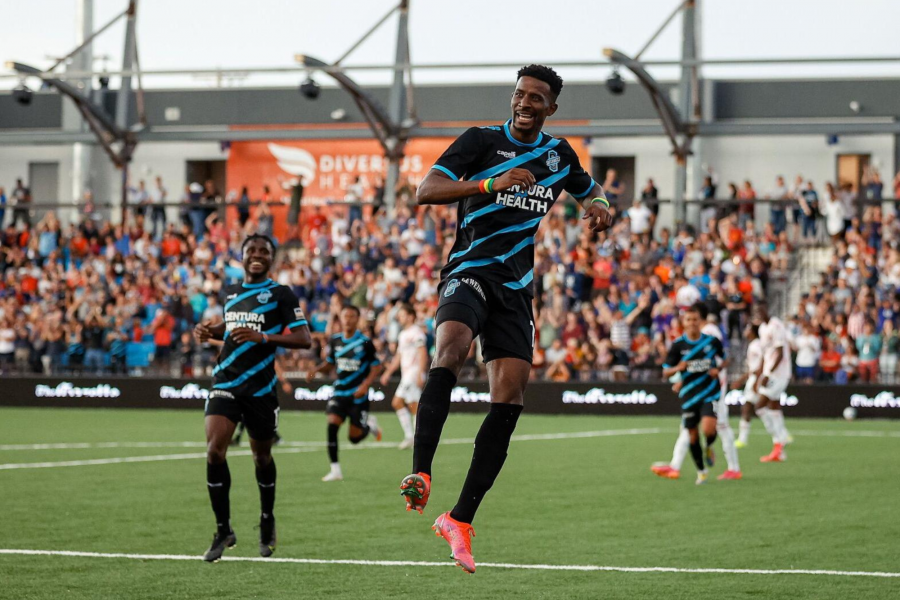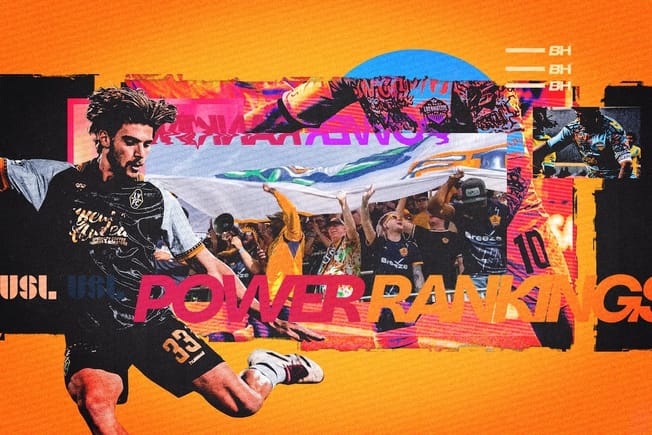This is an excerpt from Monday’s Weekend Recap. Subscribe to our free newsletter to get future editions of the Weekend Recap delivered right to your inbox.
There’s a tendency to overstate the differences between the two conferences in the USL Championship, but two interesting tactical trends have set the divisions apart in 2022. The best and most exciting teams have innovated in fun and distinct ways this year.
Let’s take a look at one major tactical trend from each conference so far this season.
EAST: 4-4-2 PRESSING SYSTEMS
There’s no tactical system more classic than a 4-4-2, and some of the best teams in the Eastern Conference are having success by building on the formation’s simplicity.
Against a team working out of a back four, you can push your wingers high and meet the opposition man-for-man. If the opposition is in a back three, that same aggression can give you a four-v-three advantage. Alternatively, your wide players can drop low and cut out dangerous wingbacks.
Birmingham is the poster child for success in a defensive 4-4-2 this year. The Legion started 2022 slowly, flitting between a back three and a standard 4-2-3-1. On the road against Phoenix in June, they sputtered early by yielding passing lanes through the middle, but a second-half switch to a 4-4-2 saved the day for Tommy Soehn’s side. The flatter shape thwarted Phoenix’s buildup and saw out a 1-0 win. A few days later, Birmingham moved into an aggressive 4-2-4 against Memphis, earning another 1-0 victory against a high-powered offense. They’ve used the 4-4-2, or a slight variation of that shape, ever since.
Tampa Bay, usually the league’s leading proponent of a back three, has also succeeded with the shape.
The Rowdies typically prefer a 3-4-3, but Neill Collins moved fullback Sebastian Dalgaard into a wing role against Pittsburgh in late June. Dalgaard sat alongside the usual front three, man marking Riverhounds maestro Alex Dixon and he repeated that trick one week later against Memphis’ Jeremy Kelly.
It can be easier to defend in the 4-4-2’s basic structure and some of the East’s top teams have taken advantage of that fact.
WEST: NO. 9S DROPPING DEEP
Although USL teams use all sorts of attacking styles, the traditional striker seems to have lost popularity across the league. You’ll still see some good, old-fashioned No. 9s in the form of Preston Judd in Los Angeles or Wilson Harris in Louisville. Still, some of the most successful offenses in the second division opt for a different sort of striker.
Let’s look at the San Diego Loyal.
They utilize their star striker, Kyle Vassell, as a target for long, lofted entry passes into the attacking half. Once Vassell establishes control of the ball, though, he can play rapid teammates in behind and follow up with his own late-arriving runs. The results have been strong for Landon Donovan’s team: San Diego’s average share of possession is down from 57% to 54% this year, thanks in part to those balls into Vassell, but their goals per game have risen from 1.59 to 1.95. Vassell has 11 goals and he’s flanked by quick wingers Thomas Amang (six goals) and Tumi Moshobane (four goals).
Elsewhere, defending Golden Boot winner and No. 9 Hadji Barry is tied for second in the league with six assists. He’s also in the 91st percentile among forwards in touches per shot. That number means that Colorado Springs’ star takes more touches than almost every other striker in the USL before firing at goal, illustrating his creative role. Barry often operates in the areas associated with a box-to-box midfielder, using his gravity to draw opposing defenses out of shape.
Finally, in Las Vegas, Danny Trejo has single-handedly dragged the Lights into the playoff hunt by dropping deep and carrying possession into attack with the ball at his feet. Between Vassell, Barry, and Trejo, some of the best attacks in the second tier are driven by atypical forward play.







Comments